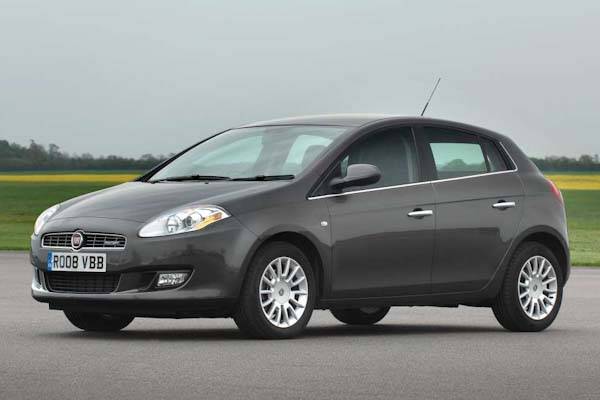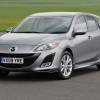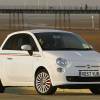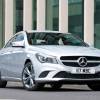
RAC sale – up to 33% off*
• Roadside cover from £5.29 a month†
• We get to most breakdowns in 60 mins or less
• Our patrols fix 4/5 breakdowns on the spot

By Andy Enright
Introduction
There are some cars that seem to garner a reputation that's out of all kilter with their actual worth. Some surprisingly mediocre cars go on to sell by the stackload, while on the other side of that coin, there are those vehicles that deserve to do well but which, for one reason or another, never really catch the public's imagination. Slot the second generation Fiat Bravo, built from 2007 to 2014, into that latter category.
When we first drove this MK2 model Bravo, we were amazed at the quality of the cabin and the value for money. It became one of our recommended cars and although it didn't achieve anything like the sales of the Ford Focus or the Vauxhall Astra, the small number of buyers who did take the plunge seemed satisfied with their Bravos. So here's what to look for when buying used.
Models
5dr family hatchback (1.4 petrol 1.6, 1.9, 2.0 diesel [Easy, Active, Active Sport, Active Eco, Dynamic, Dynamic Eco, Sport, MyLife, MSN Special Series])
History
Remember the old Fiat Brava and Bravo twins? Probably not. In case you need reminding, Fiat decided to launch these models back in 1995, choosing to call the frumpier five-door car the 'Brava' and the go-getting three-door model the 'Bravo'. These cars replaced the Tipo which had been only a limited success in the UK. Both shared the same chassis and engines as each other, although the Bravo's styling was aimed at a younger audience. The Bravo and Brava eventually made way for the three and five-door Stilo models, again cars that punched minuscule dents in the sales figures of the Ford Focus, Vauxhall Astra and Volkswagen Golf.
In 2007, Fiat got a bit more pragmatic. The UK importers knew that their Bravo wasn't going to square up head-to-head with the big hitters in the class. In order to differentiate it a little and work a profitable niche, Fiat concentrated on making the Bravo look better than anything comparable.
The cars launched with a choice of 1.9-litre diesel engines or 1.4-litre petrol units. In May 2008, the Bravo got a pair of 1.6-litre Multijet diesels, in 105 or 120bhp power outputs. The old 1.9-litre diesel was replaced in February 2009 with a Euro V-compliant 2.0-litre diesel with a particulate filter that reduced CO2 emissions to 139g/km. In June 2009, Fiat announced a tie-in with MSN with the Bravo MSN Special Series, fitted with Sony Ericsson mobile phone technology, custom-made for the car, which allowed direct access to the MSN portal. Priced identically to the mechanically similar Bravo 1.4 16V Active, it also threw in the navigation and communications kit, Tempesta Grey pearlescent paint, 17-inch alloy wheels and a leather steering wheel.
The MyLife trim level was added in August 2011. Based on the range's Active trim, this was paired with the MultiJet 105bhp diesel engine and featured 16-inch alloy wheels, Blue&Me entertainment and communication system, a leather steering wheel with audio controls, ESP stability control, air conditioning, electric front windows and driver, passenger and side airbags. The last Bravos were sold in late 2014 and were run-out in a sole 'Easy' trim level. Somewhat oddly, Fiat had lined up no like-for-like replacement for the car, buyers instead being steered towards the Fiat 500L and 500X models.
What You Get
It's easy to forgive the Bravo any minor shortcomings when you walk round the car, taking in its beautifully integrated detailing and elegant proportions. Many five door hatches are about as beguiling as the prospect of an evening spent creosoting your mother-in-law's fence, but the Bravo is different. Just as Fiat's smart little Grande Punto added a touch of the exotic to the supermini class, this Bravo did the same for cars the next size up. If size is everything to you, the Bravo may well disappoint. Ford spent millions on making the Focus fit virtually anybody but Fiat hasn't spent that sort of budget on the Bravo and as such, it's far tighter than the Ford in the back, although there's a decent amount of luggage space in that curved rump.
The interior feels very well built. Bright finish plastics lift the cabin and the controls are easy to figure out without recourse to the manual. It all looks agreeably Italianate as well, even if this is a clever façade. Fiat has really got the hang of the whole soft-touch dashboard moulding in recent years and the Bravo's supple, textured finish wouldn't look out of place in an Audi. The Bravo features two front airbags, two front side bags, two window bags and a knee airbag for the driver.
ABS anti-lock braking with electronic brakeforce distribution and an ESP stability control system should prevent the worst coming to the worst. The ESP system includes functions such as anti-slip regulation (ASR) to limit wheelspin in slippery conditions and engine torque regulation which prevents the driven wheels locking up during rapid downshifts. Hydraulic brake assist boosts pedal pressure in emergency situations and there's even a hill-holder function to take the faff out of hill starts.
What You Pay
Please fill in the form here for an exact up-to-date information.
What to Look For
Fiat tends to have an unspectacular reputation for reliability and their dealers have come in for some flak in customer satisfaction surveys, but the Bravo hasn't attracted the ire of its buyers. The engines are solid and unspectacular and Fiat didn't over-reach itself with in-car tech. We'd look to one of the later models, which benefit from the experience curve at Fiat's Frosinone factory.
Check for upholstery damage caused by child seats in the back, typical supermarket dints and scrapes, slipping clutches on the manual cars and ensure all the electrical functions work as advertised as these can be expensive to fix.
On the Road
Upon launch, the Bravo wasn't too far off the class leaders when it came to handling through a series of twisties and the selection of engines was, by and large, better than the more obvious Ford Focus and Vauxhall Astra offerings. Petrol engines first. The range opened with a 90bhp normally aspirated 1.4-litre unit. Most buyers however, went for the turbocharged versions of this engine in either 120 or 150bhp guises. These use turbos to offer punchy performance with decent fuel economy.
The diesel engines were the big draw, Fiat leveraging its experience to great effect. Two 1.6-litre MultiJet diesels were offered, with either 105 or 120bhp, plus a 1.9-litre unit with 150bhp. The more powerful diesel has some real muscle to it, getting to 60mph in 9.0 seconds and topping 130mph. With 305Nm of torque available, it's not going to have any problem putting irksome white van men in their place, that torque output superior to something like a Subaru Impreza WRX. The later 2.0-litre was even gutsier, with 165bhp and 360Nm of torque at its disposal giving it class-leading performance - 0-62mph in 8.2 seconds and a top speed of 134 mph - while returning 53.2mpg fuel economy in the combined cycle.
Overall
The second generation Fiat Bravo makes a very interesting used buy. It's far from obvious, but costs very little, though is built very well. Going for something like a 2.0-litre diesel variant nets you a vehicle that, for some, will hit a particular sweet spot. You'll get modern emissions, economy and performance but an old-school feel to the chassis, steering and systems.
That's a blend a lot of drivers in the Focus-class family hatchback segment are going to like if they're on a budget and find themselves shopping in the used car market. We can certainly see this one surprising a few people if they're just prepared to give it a chance.







